SUMMARY
VENOM: None
PREVALENCE: Not common
ACTIVE PERIOD: Active during the day and at dusk
KEY ID FEATURES: Burnt orange to reddish brown in color with faint dark banding running the length of the body
BEHAVIOR: Calmer than Taiwan Kukri but capable of delivering slashing cuts with rear egg slicing 'Kukri' tooth
SIZE: Small - 40-60cm
IUCN: LC - Least Concerned
OTHER: Relatively unique coloring, can look similar to Taiwan Kukri at quick glance
QUICK ASSESSMENT 0-10
GALLERY
IMPORTANT: Many snakes have significant variance in coloration and pattern even within the same species. There can also be extreme differences in appearance from juveniles to adults so it is important to never assume you have properly identified a snake.
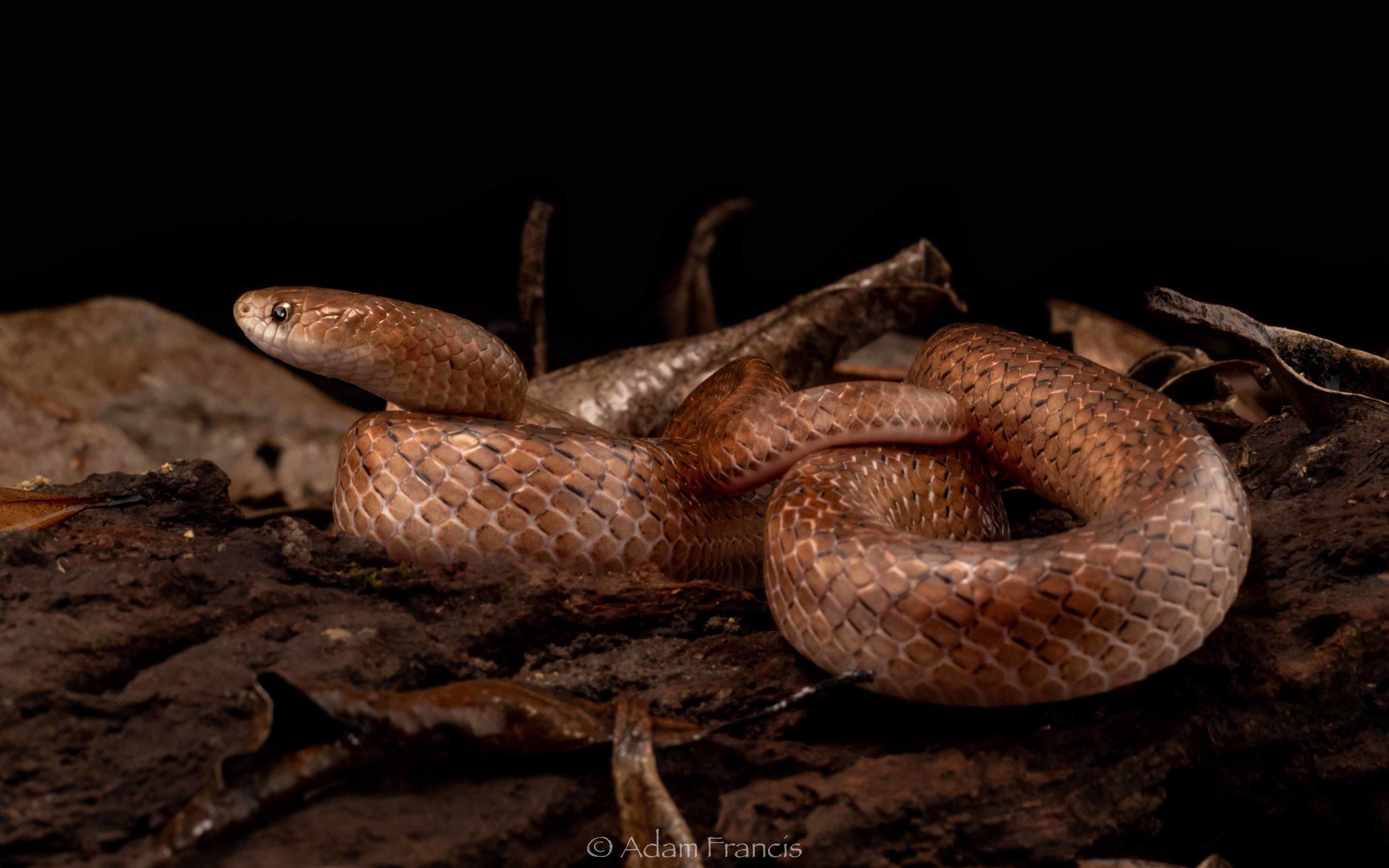
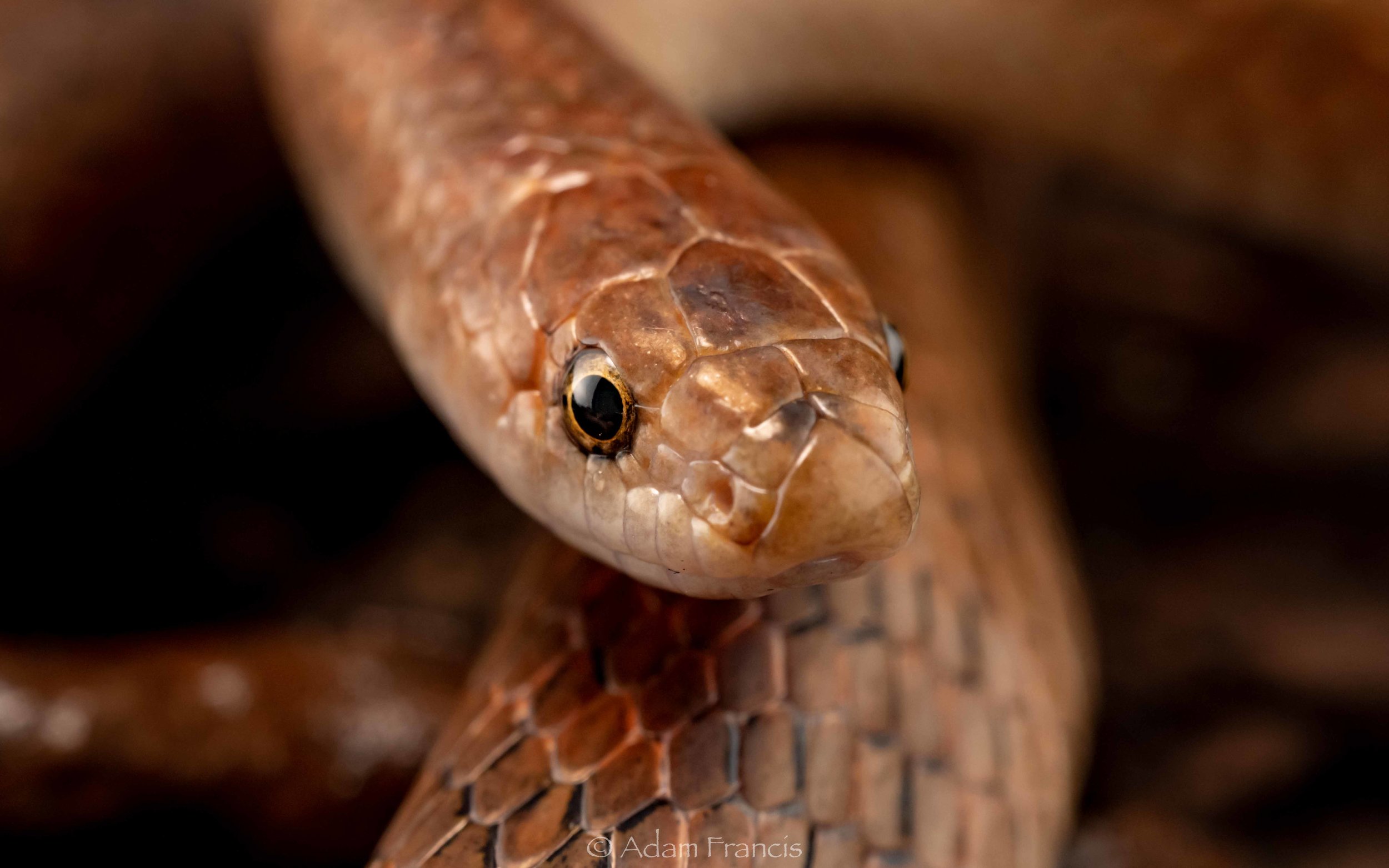
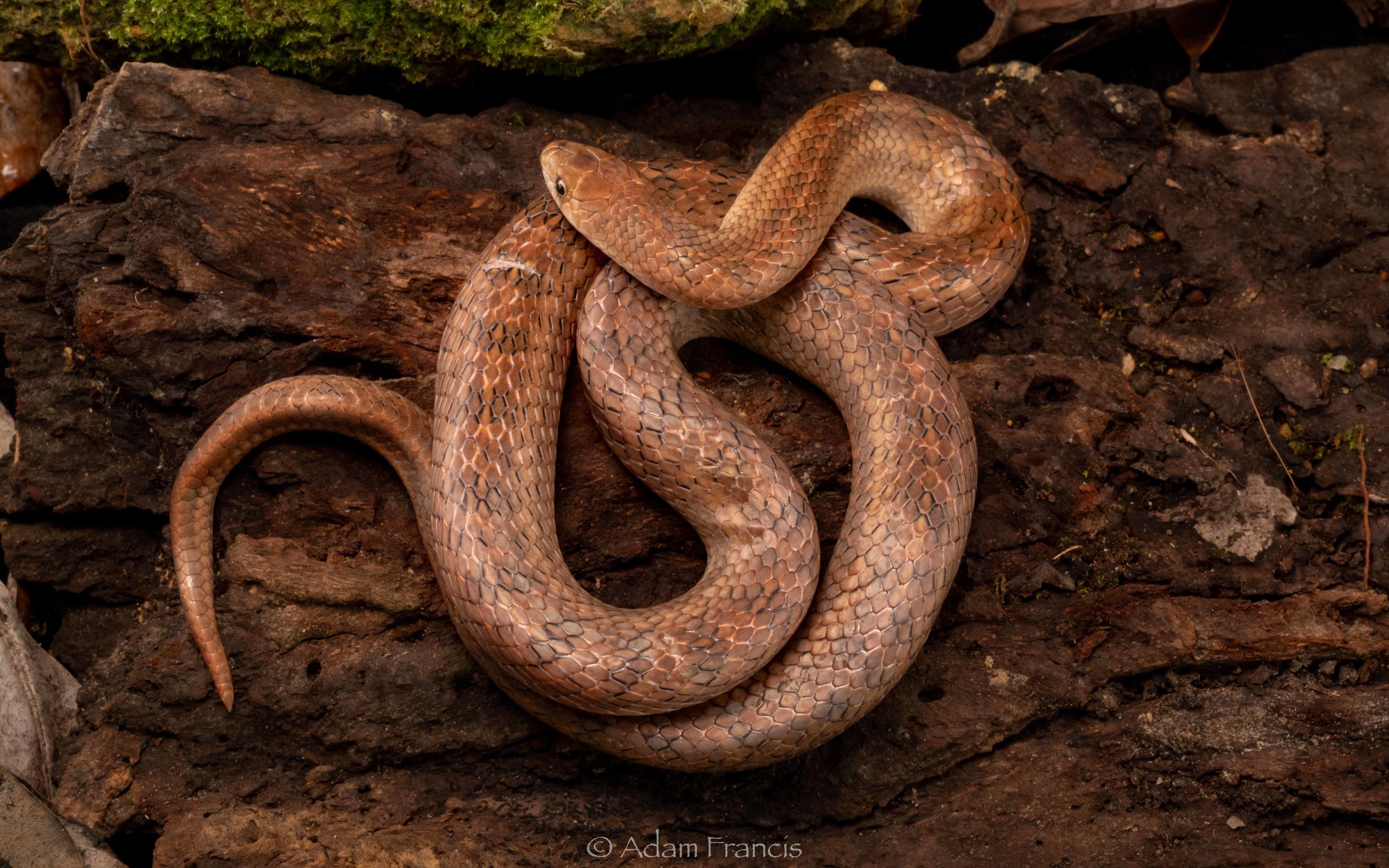
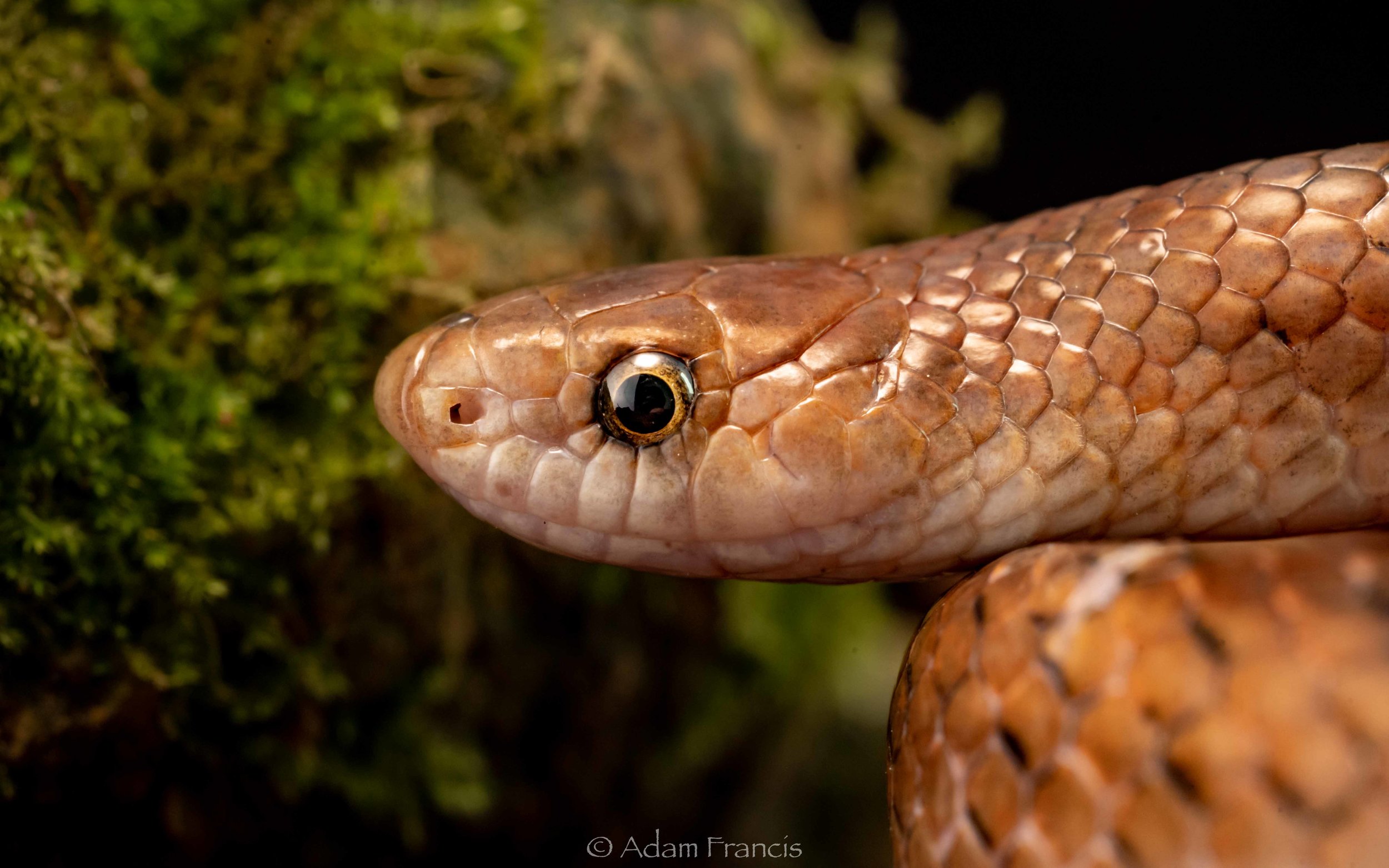
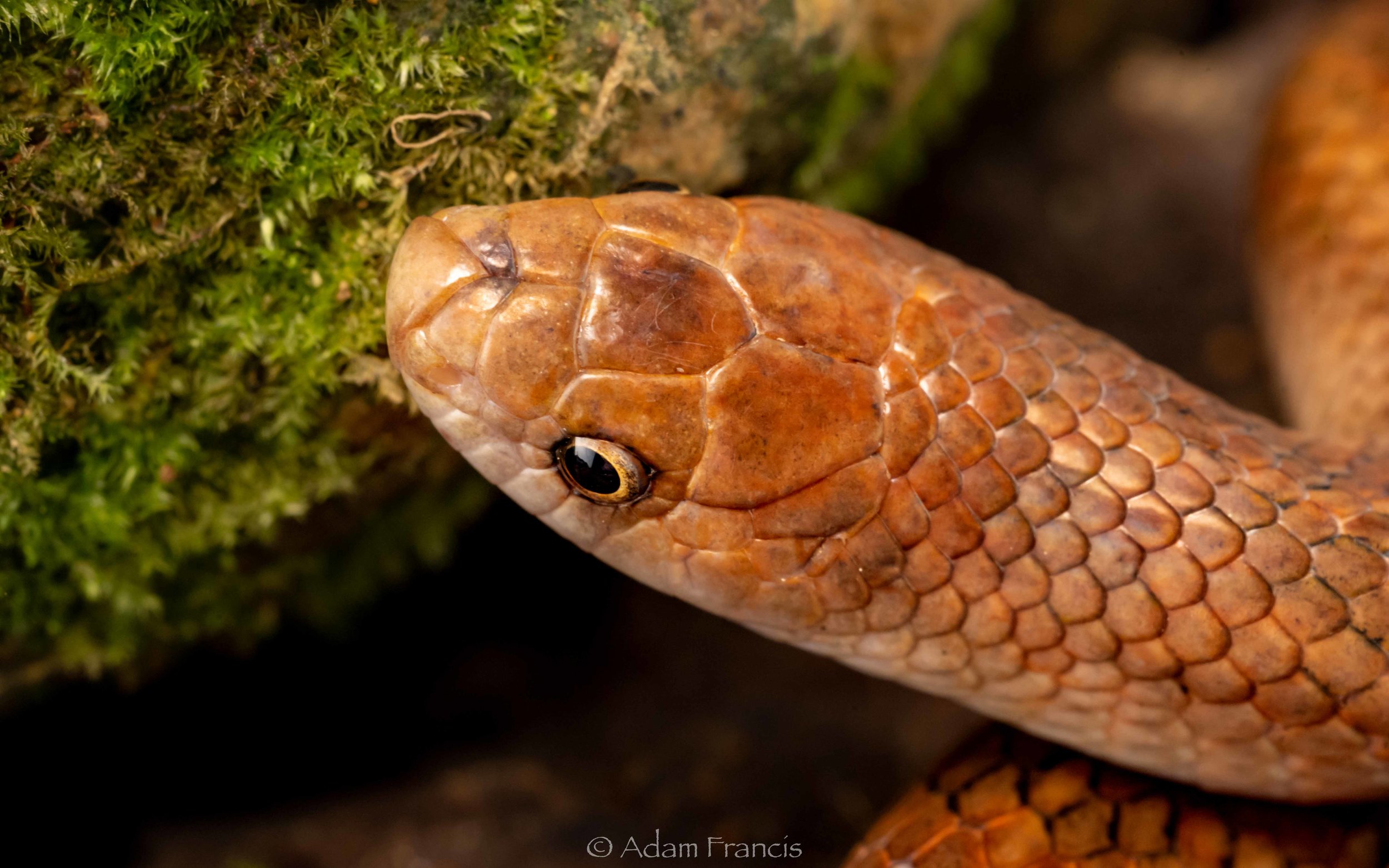

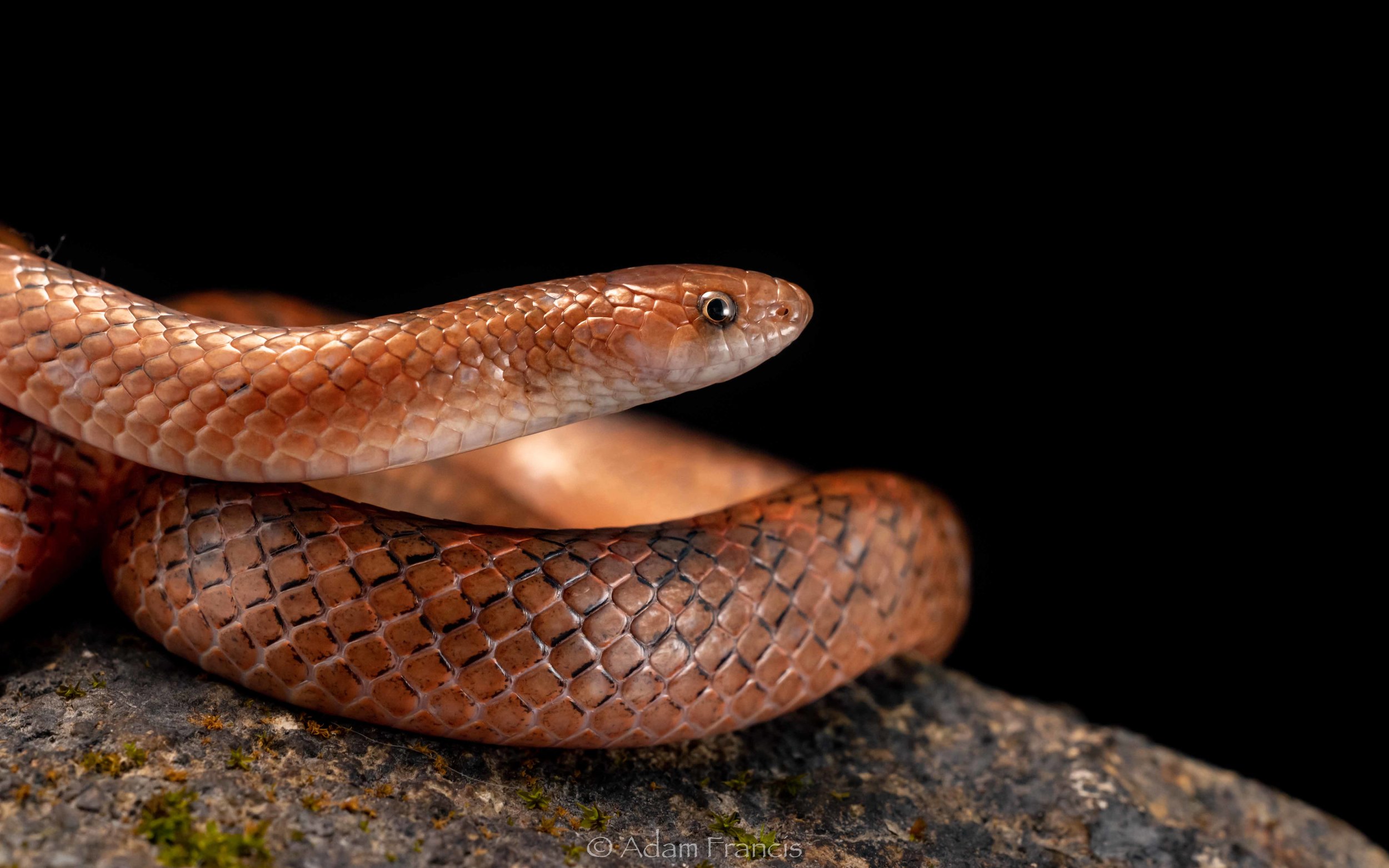
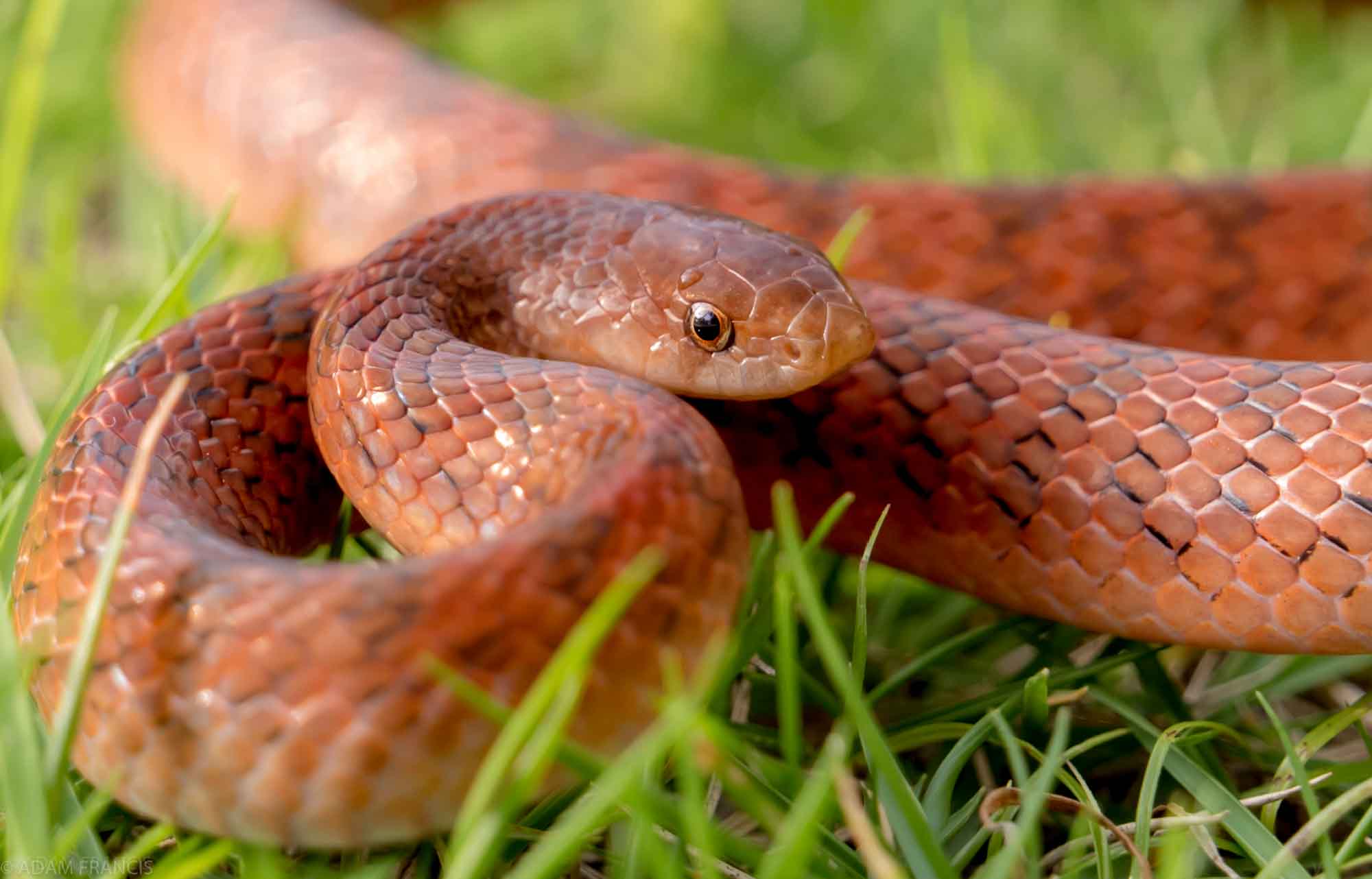
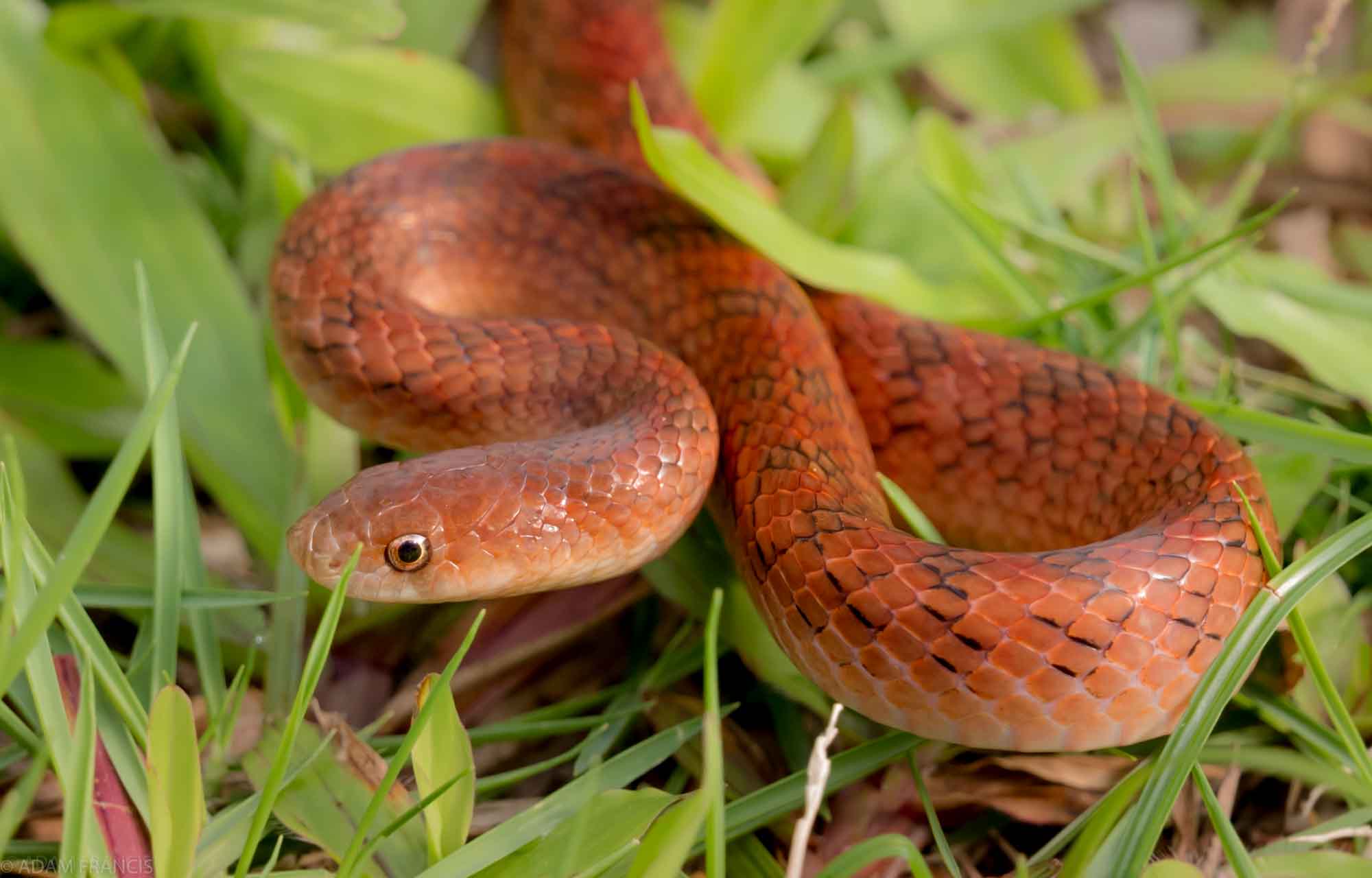

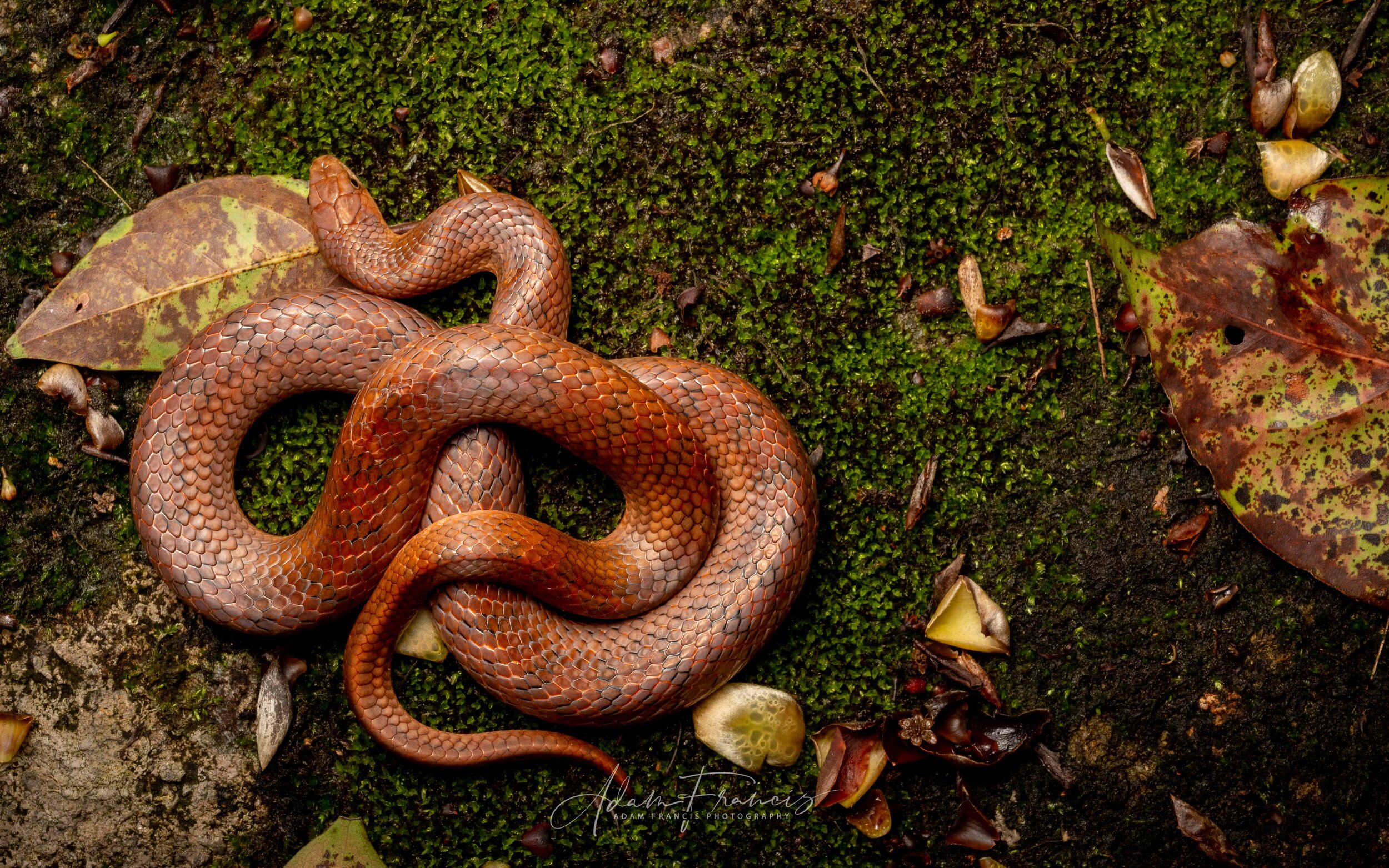

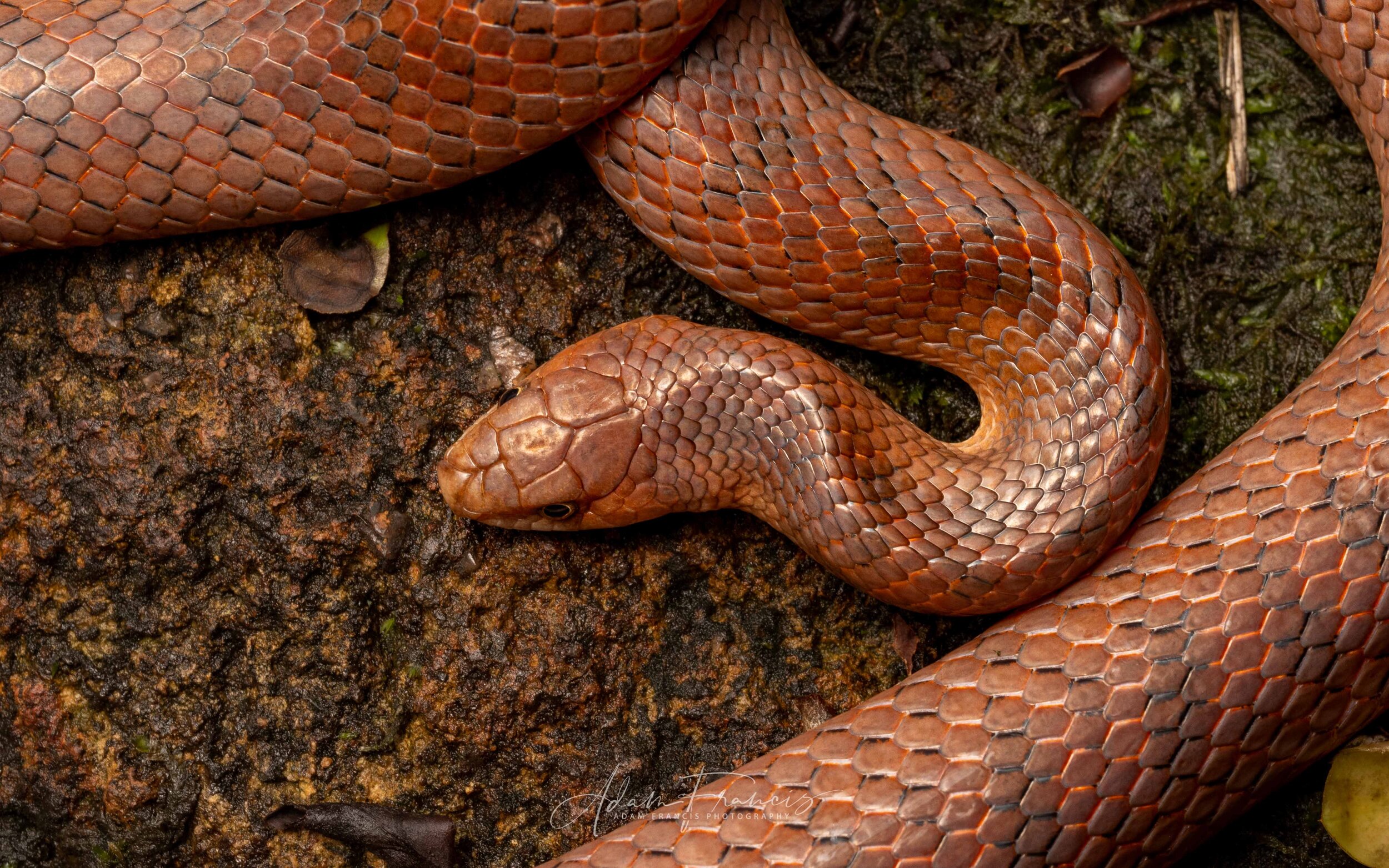
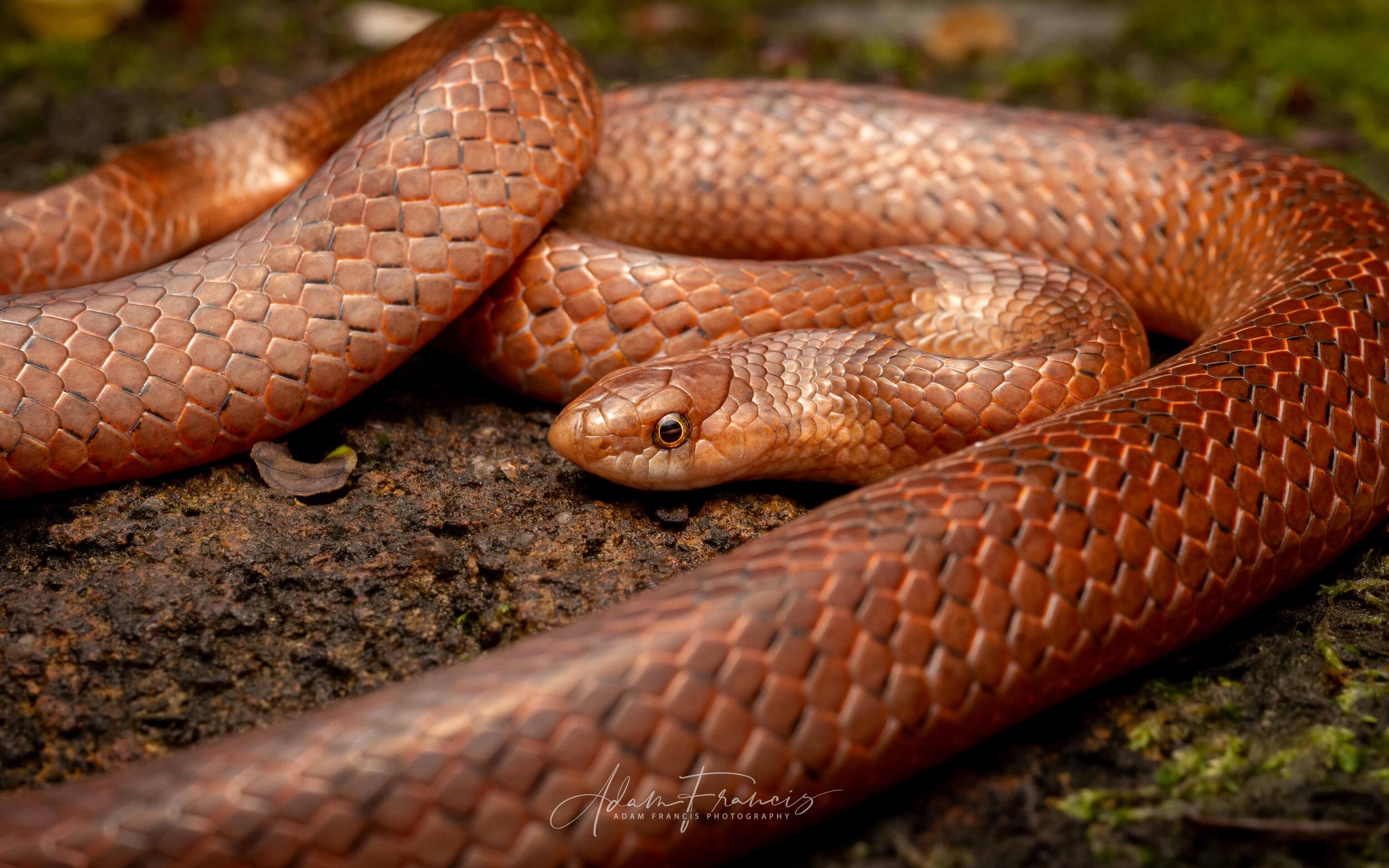

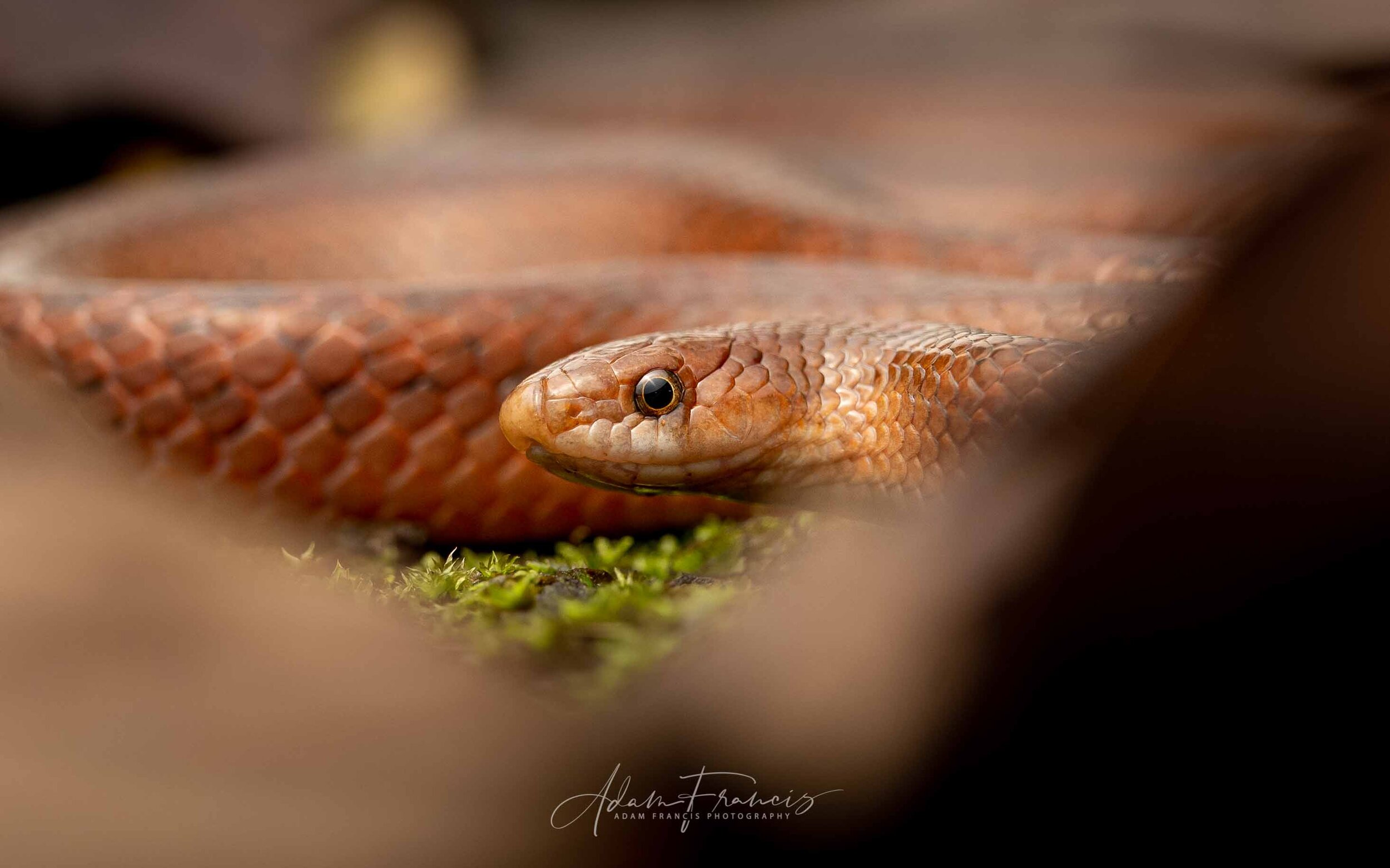
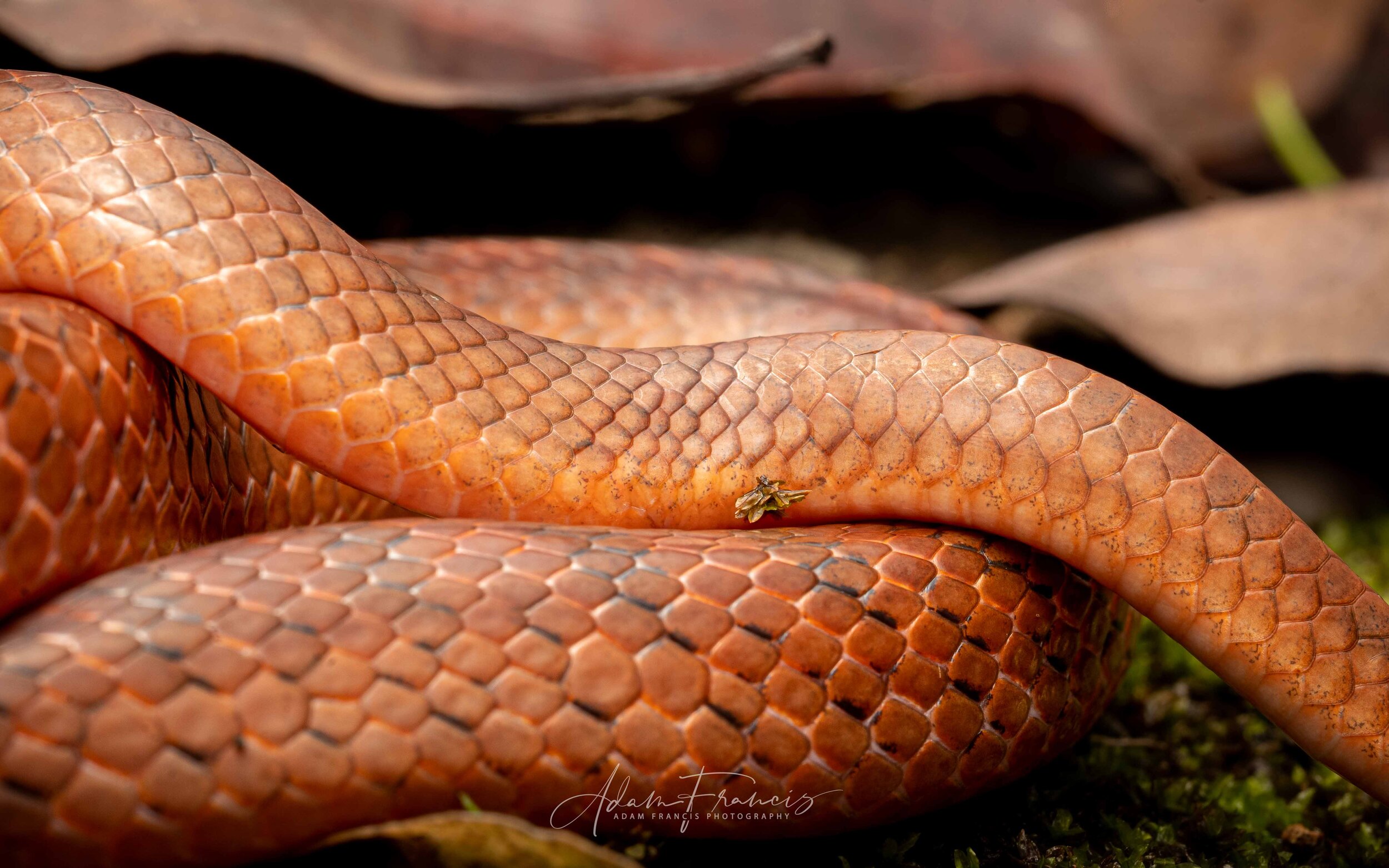
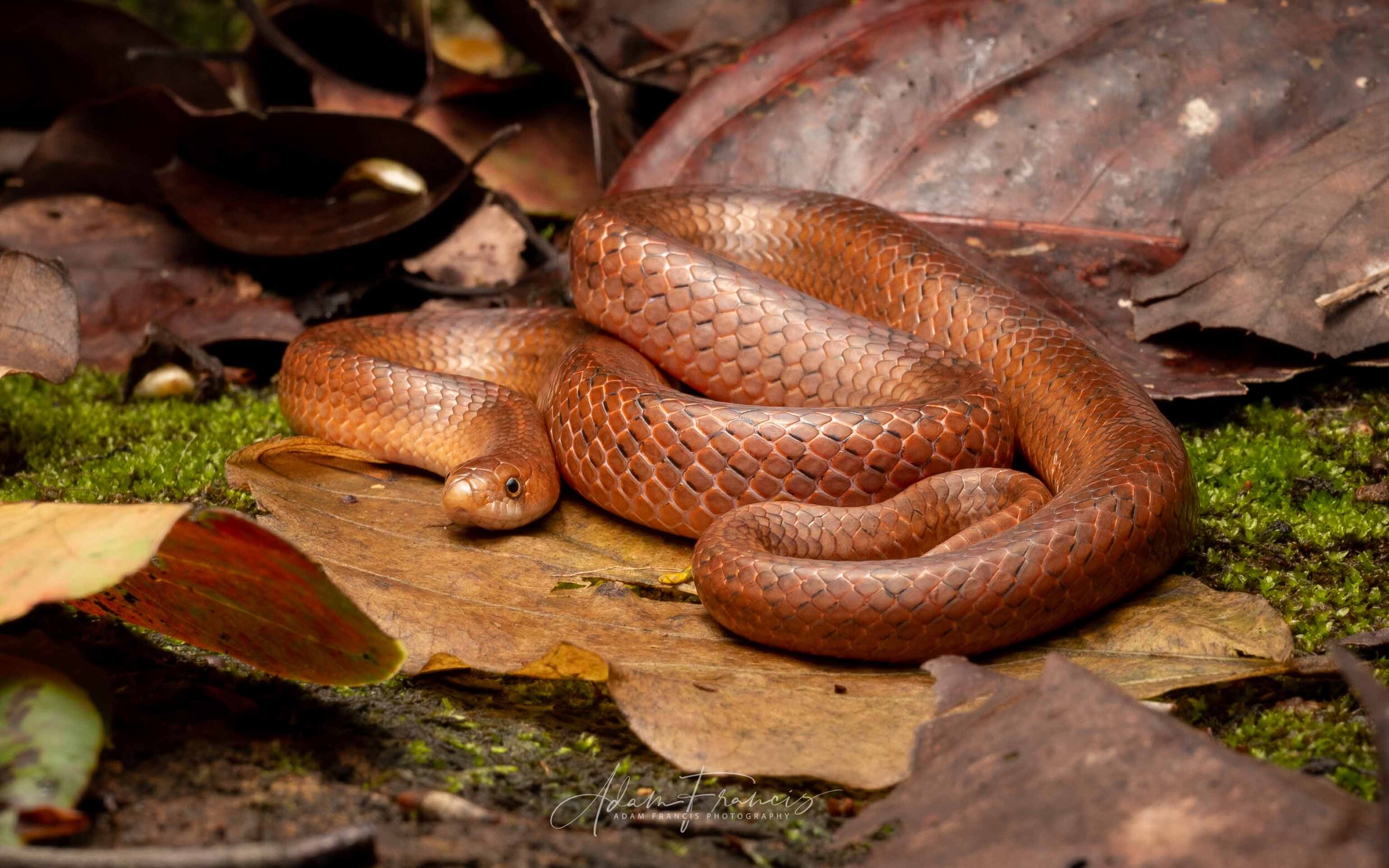
DESCRIPTION
The Golden Kurki looks like a slightly smaller version of its cousin the Taiwan Kukri. It has burnt orange to reddish brown coloration with faint vertical banding running the length of the body. The head is small relative to the body with a plow like nose used in burrowing. Reddish eyes with round pupils and the characteristic 'Kukri Knife' shaped rear egg slicing tooth. Tail is short with a spur on the end and tail scales are larger than the body scales. Ventral or belly scales are semi transparent pearlescent white.
BEHAVIOR
A sub-fossirial (spending significant time buried in leaves or underground) and largely diurnal species they can also be found at dusk or early morning. Generally docile when observed and will flee deliberately though not terribly quickly when disturbed. Though not venomous all Kukri snakes are capable of opening their mouth and shaking their head back and forth in order to slice with their modified rear egg cutting tooth. While not life threatening these cuts can be delivered quickly and in high volume making this snake quite a handful despite its small size of a maximum ~ .5 meters. The Golden Kukri is also an adept burrower and will do so both to forage for food and to seek shelter. As indicated by their infamous back teeth they are fond of eating reptile eggs along with other small prey.
HABITAT
A completely terrestrial snake the Gold Kukri is found mostly in forested areas as well as water culverts and rocky out croppings. Not as commonly seen in the wild due to its fossorial nature and should never be handled due to its ability to deliver slashing cuts.
MISTAKEN IDENTITY
NO SNAKE SHOULD EVER BE HANDLED BY ANYONE BUT EXPERTS: Not normally confused with other species due to its unique color profile but can look somewhat similar to its cousin the Taiwan Kukri.

